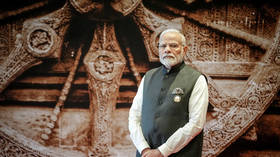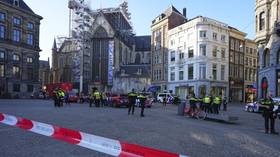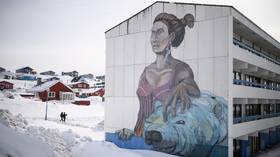Indian exit polls project victory for Modi

Prime Minister Narendra Modi’s party is set to win a comfortable majority for the third successive time in India’s national elections, according to several early exit polls. The official count is scheduled for June 4, when the results of the election will be officially announced.
Exit polls run by news outlets on Saturday, immediately after the last phase of voting had finished, indicate that the National Democratic Alliance, led by Modi’s Bharatiya Janata Party, will secure well over the 272 seats required for a majority in India’s 543-seat lower house of parliament. This would extend Modi’s decade-long tenure at the helm of the world’s fastest-growing major economy.
The polls were released hours after the last of India’s nearly 970 million registered voters cast their ballots in a six-week election spread over seven phases, starting on April 19. Exit polls, however, have a mixed record in Indian elections.
A win for Modi would be historic, as no prime minister since Jawaharlal Nehru (India’s first prime minister after it gained independence from Britain in 1947) has won three consecutive terms. Nehru remained in office continuously for nearly 17 years.
#News18ExitPoll predicts 300+ seats for BJP, I.N.D.I.A bloc to win 125-140 Read more: https://t.co/qlaRHR112N#LokSabhaElections2024#ElectionsWithNews18#BJP#NDA#IndiaAlliancepic.twitter.com/VYMaIsEgQs
— News18 (@CNNnews18) June 1, 2024
The incumbent prime minister celebrated the early results, claiming they signal a victory for the BJP-led alliance. “I can say with confidence that the people of India have voted in record numbers to reelect the NDA government,” he posted on X (formerly Twitter).
He stressed that the BJP’s performance resonated with voters, particularly the poor, who saw “a qualitative change” in their lives. Modi also hailed his government reforms for “propelling India to being the fifth largest global economy” while claiming the opposition Indian National Developmental Inclusive Alliance (INDIA) “failed to strike a chord with the voters.”
The bloc, led by the Indian National Congress Party, was formed last year and includes over 20 parties. The Congress, the country’ oldest party, campaigned this year from a position of having the lowest number of seats in its electoral history.
The BJP came to power in 2014, winning 336 seats (along with its NDA allies). In 2019, the NDA took a total of 352 seats. This time, the BJP’s stated aim was to win 370 seats, while the target for the NDA was set at 400.
At least 272 seats are needed for a party or coalition to govern. However, 364 seats are required for structural constitutional changes.
Modi, the BJP’s star campaigner, traversed the country in the weeks leading up to the election, holding massive roadshows and addressing large crowds. The party’s election manifesto is called ‘Modi ki Guarantee’ (Modi’s guarantee).
Rahul Gandhi, the face of the Congress Party, held a 63-day Bharat Jodo Nyay Yatra (India Unity and Justice March), during which he crossed 6,500km from India’s northeast to the financial capital, Mumbai, on the western coast. Previously, he also walked 4,000km from India’s southern tip, Kanniyakumari, to Srinagar in Jammu and Kashmir, connecting with voters and fellow party members.
Where India Meets Russia: Follow and share RT India on X and Instagram














